If you’ve ever considered adding a pet salamander to your family, one of the most important things to consider is what kind of environment they need to thrive. Food and water are always staple considerations but have you heard that these critters require a heat lamp? This has been the new talk lately.
While it is true that certain types need higher temperatures than others, Salamanders are cold-blooded creatures, so they don’t exactly need one. Even so, this ain’t something I can just answer in a straight one-liner. So, it’s best if you read on below and get a deeper understanding of it.
If you’re a salamander owner, I promise you this will help your salamander in various ways…
Do salamanders need a heat lamp?
Heat lamps are not recommended for salamanders. Rather, heat lamps would increase the risk of uncontrolled heat that can harm the skin and eyes of your salamander.
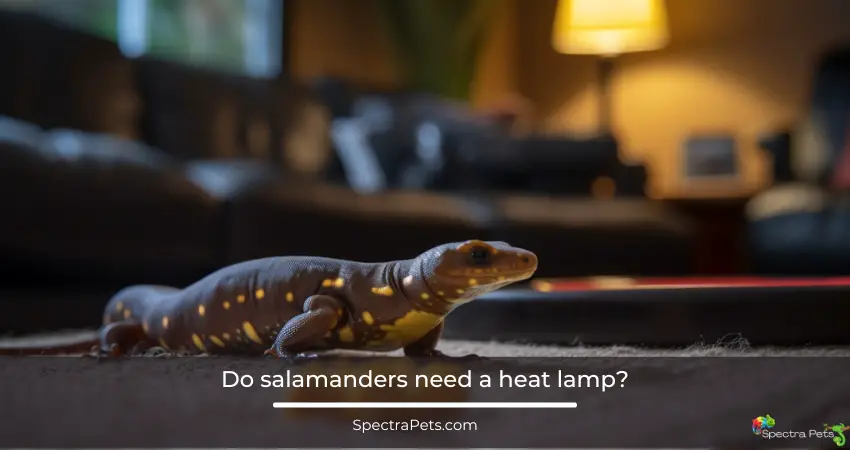
The average room light would be enough for them. For some species, you can use UVB light for health benefits. In short, the minimum room lighting is mainly needed not for heat but for the standard light cycle of their habitat.
What kind of lighting does a salamander need?
In terms of lighting requirements, salamanders do not need any extra lighting inside their tank. The exposure to indoor fluorescent lighting in the room would be ample for them.
If you are planning to add a versatile lighting system like UVB light or sun lamp, it would turn fatal for them. These fragile creatures can’t withstand such high exposure to light. In their natural habitats, salamanders spend most of their time under leaf litter.
Moreover, you must ensure your pet salamanders are not exposed to direct sunlight. However, it would be best if you can mimic the 10–12 hours of daylight using the room light. It keeps the chance of fatality rate low while giving them the natural lighting pattern for smooth & uninterrupted breeding time.
In the salamander world, you will find a long list of varieties. Here in the following, I am adding a table to help you to know about the lighting requirement of your pet salamander…
| Species name | Lighting Requirement |
|---|---|
| Axolotl | 10–12 hours Moderate lighting of the room (No UVB light is required) |
| Fire salamander | No requirement of any special lighting but a low UVB light would add extra health benefits. |
| Tiger salamander | Room lighting exposure is enough. UVB lighting is not needed. |
| Fire belly newt | No lighting is needed. Direct sunlight exposure is a big no. Low-powered fluorescent might work to support the newt-friendly plants to grow. |
| Eastern newt | Low UVB light can be added. Direct sunlight is prohibited. 14.5 hours of lighting in Summer. 9.5 hours of lighting in Winter. |
| Spotted salamander | Low-power UVB light will be helpful for optimum body function. |
| Marbled salamander | A low UVB light would provide good support. Direct sunlight would be fatal. |
| California newt | This species does not require any tank lighting. |
Do salamanders actually need heat?
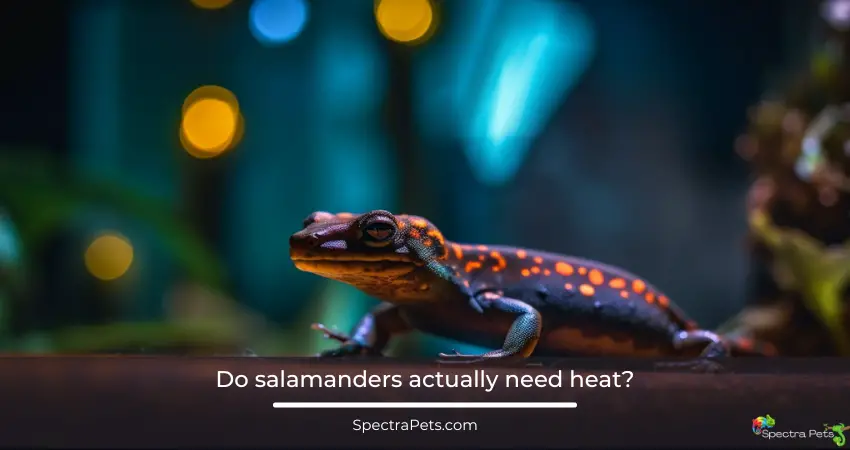
Most salamanders can be healthy & functional with a temperature between 60-70 degrees Fahrenheit. However, the appropriate temperature can vary from one species to another.
It’s crucial to keep the temperature of a salamander tank comparatively cooler so that they don’t get stressed. Beyond 75 degrees Fahrenheit would be deadly for any salamander species.
If you keep them in a place that has the average room temperature just like other rooms of your house, then it’s good to go.
It would be perfect to use heating pads to keep your salamander happy in the winter if you think the room temperature is too low. However, the salamander tank temperature should be monitored closely.
To give you a bit of a clear picture, I am providing a short table so that you can keep the inner tank temperature at the optimum level.
| Species name | Habitat Temperature |
|---|---|
| Axolotl | 60-64 °F |
| Fire salamander | 60-68 °F |
| Tiger salamander | 65-70 °F |
| Fire belly newt | 62-68 °F |
| Eastern newt | 65-70 °F |
| Spotted salamander | 55-65 °F |
| Marbled salamander | 65-75 °F |
| California newt | 60-70 °F |
| Southern torrent salamander | 41-50 °F |
| Two Toed Amphiuma | 70-75 °F |
| Japanese fire-bellied newt | 60-75 °F |
Whenever you see the tank temperature is below the average low level then you should use the heating system to keep your salamander in good shape.
Do salamanders need a heating pad?
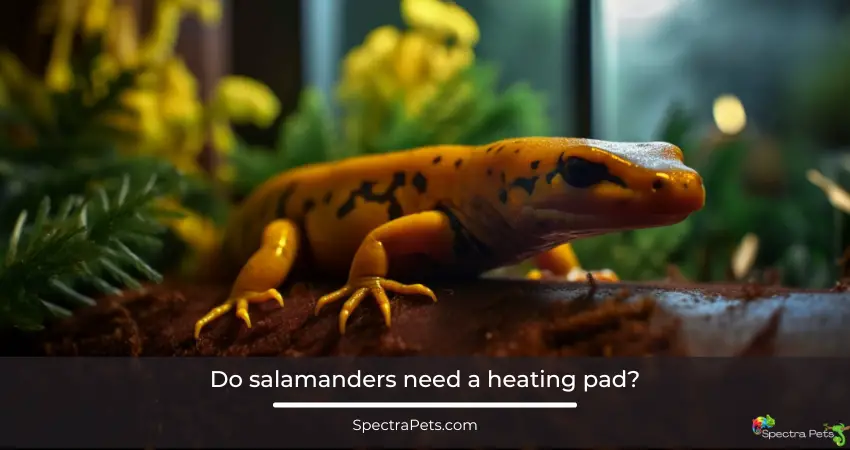
A heating pad is mostly needed for salamander breeds that belong to a tropical region or subtropical region. They don’t need a heating pad as long as their tank temperature does not fall below their lower average temperature margin.
The moment the temperature takes a sharp decline, you should install a smaller size heating pad under the salamander tank. Make sure this pad only gives heat to a smaller portion of the tank.
If your salamander feels like getting heated it will get closer and if they feel they need to stay far it will simply move to the other side of the tank.
Is heat or cold more appealing to salamanders?
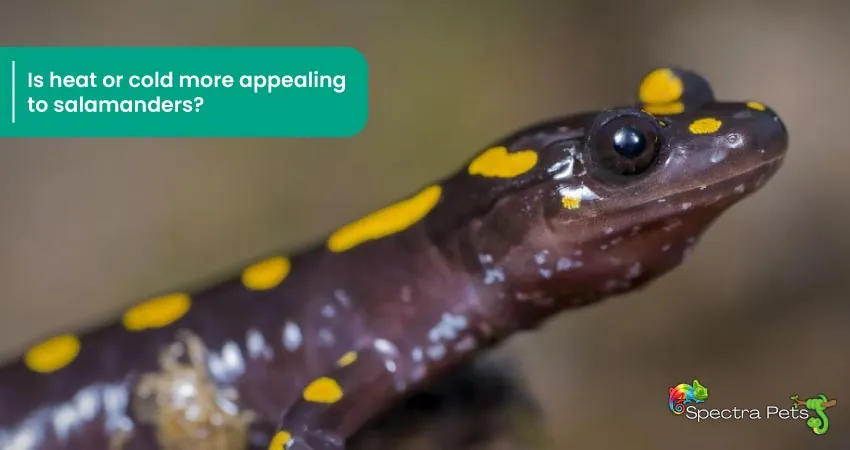
Salamanders prefer a slightly cooler environment but not too cold. Both too cold & too hot can be highly detrimental to their health.
Plus, in scorching summer & icy weather, these little critters go a bit deep into the substrate to protect themselves from extreme temperatures.
Long-term exposure to high & low temperatures can lead to organ failure.
Do salamanders like sunlight?
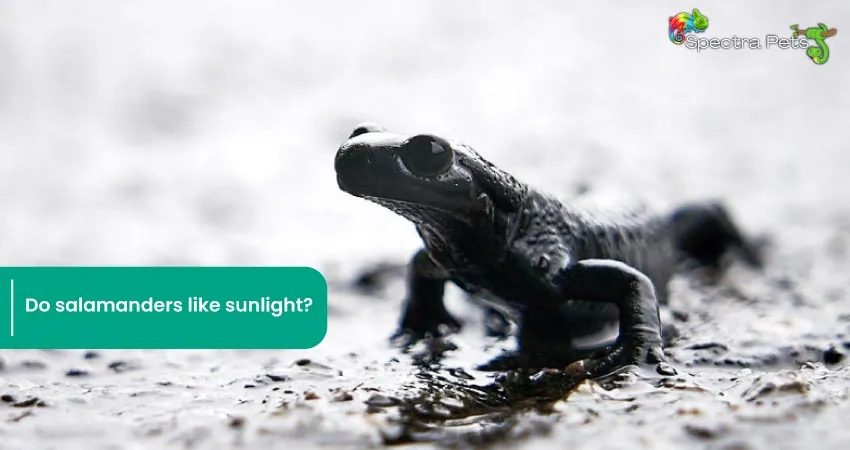
No, salamanders don’t like sunlight. A significant percentage of salamander species would take shelter rather than get exposed to direct sunlight. This is one of the big reasons why they stay highly active during the rainy season.
The absence of sunlight and an average temperature give them the perfect climate to move around without any issues.
Conclusion
There is a lot of discussion on whether salamanders need heat lamps and after doing some research, it seems that the answer may be that they do not heat lamps if the room lighting is enough.
However, there are other factors to consider such as humidity, temperature, and health benefits. So, It is important to consult with a veterinarian or reptile specialist before making any decisions about what kind of environment to provide for your salamander. Good luck.

